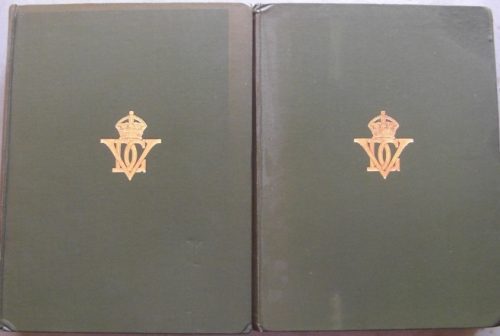Description
Title: The 10th Royal Hussars (Prince of Wales’s Own)
Author: Brander, Michael
Condition: Very Good
Edition: 1st Edition
Publication Date: 1969
ISBN: 0850520142
Cover: Hard Cover with Dust Jacket – 137 pages
Comments: A well-researched and authoritative history of the 10th Royal Hussars.
The 10th Royal Hussars (Prince of Wales’s Own) was a cavalry regiment of the British Army from 1715 to 1969.
In response to the Jacobite Rebellion, the regiment was raised in 1715 as Humphrey Gore’s Regiment of Dragoons. It was known by the names of several other colonels in subsequent years, fighting at the Battle of Falkirk and Battle of Culloden as Cobham’s Regiment of Dragoons. It was retitled as the 10th Regiment of Dragoons in 1751. During the Seven Years’ War, the light troop of the regiment (formed in 1755) fought in a number of raids on the French coast, and the regiment itself fought at the Battle of Warburg, Battle of Kloster Camp, Battle of Vellingshausen and Battle of Wilhelmsthal.
In 1779, the light troop was detached to form the 19th Regiment of (Light) Dragoons, and in 1783 the Dragoons Regiment was retitled as the 10th (Prince of Wales’s Own) Regiment of (Light) Dragoons in honour of the future King George IV of the United Kingdom. Beau Brummell was a cornet at the time, and it was in the regiment that he met the prince.
In 1806, the regiment was again redesignated, this time becoming a hussar regiment as the 10th (Prince of Wales’s Own) Regiment of (Light) Dragoons (Hussars), and sailed for Spain in 1808. During the Peninsular War, they fought at Sahagun, Benavente, and the Battle of Corunna.
In 1813, having landed once more in Spain, they fought at Morales, and Vittoria in Spain, and then at Orthes and Toulouse in France. In the Waterloo campaign they again saw action, fighting at the Battle of Waterloo as part of the charge which routed the French cavalry.
[edit] Victorian era
After being sent to India in the 1840s, the regiment was deployed during the Crimean War. They saw action in the Siege of Sevastopol, with fighting at the Battle of Eupatoria and Kerch.
In 1861 they were renamed the 10th (The Prince of Wales’s Own) Royal Hussars. They saw action in the Second Anglo-Afghan War, at the Battle of Ali Masjid in 1878, and in the Sudan, Battle of El Teb, and Egypt in 1884.
With the outbreak of the Second Boer War, the regiment sailed for South Africa in 1899. After fighting at Colesberg, the regiment participated in the relief of Kimberley in February 1900, the Battle of Paardeberg immediately afterwards, and then two years of fighting in the Transvaal.
The regiment also saw action on the North-West Frontier in 1908.
In 1914, the regiment was recalled to England and quickly despatched to France as part of the British Expeditionary Force, in 3rd Cavalry Division. Whilst it did not see a great deal of action as cavalry, it provided one company of men for an infantry battalion, which served in the front lines.
After brief service in Ireland after the war, the regiment returned to the UK in 1921 and were retitled 10th Royal Hussars (Prince of Wales’s Own). Deploying to Egypt in 1929 and India in 1930, the regiment returned to the UK in 1936 and began the process of mechanisation. Originally assigned to 3rd Infantry Division, they were moved to the Mobile Division and then to 2nd Armoured Brigade of 1st Armoured Division in 1939. At the same time, they became part of the Royal Armoured Corps.
With the outbreak of war, the 1st Armoured deployed to France. It fought in northern France and Belgium, returning to England without any vehicles in June 1940. In December 1940, a group of personnel were detached to form the cadre of the 23rd Hussars.
In November 1941 the regiment deployed to North Africa with 2nd Armoured Brigade, joining 7th Armoured Division. Now equipped with Crusader tanks, they saw action in Operation Crusader, the Battle of Alam Halfa and the Second Battle of El Alamein.
In Italy, from 1944 to 45, the regiment fought both as an armoured unit and as dismounted infantry.
The regiment deployed to Italy and Germany as occupation forces in 1945-6, and then spent most of the subsequent years as an armoured regiment in the British Army of the Rhine, with overseas deployments to Jordan and Aden.
In 1969, the regiment amalgamated with the 11th Hussars (Prince Albert’s Own) to form The Royal Hussars (Prince of Wales’s Own).

